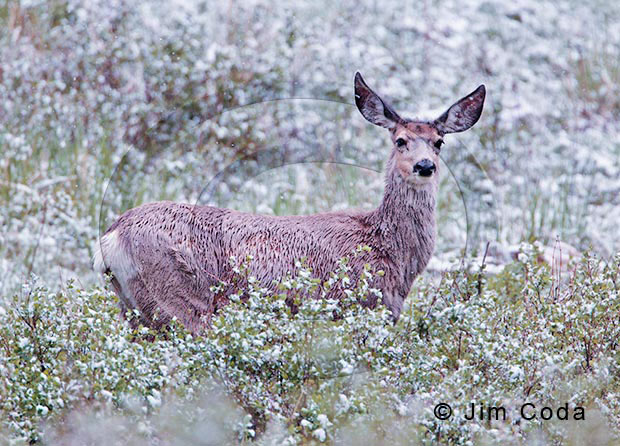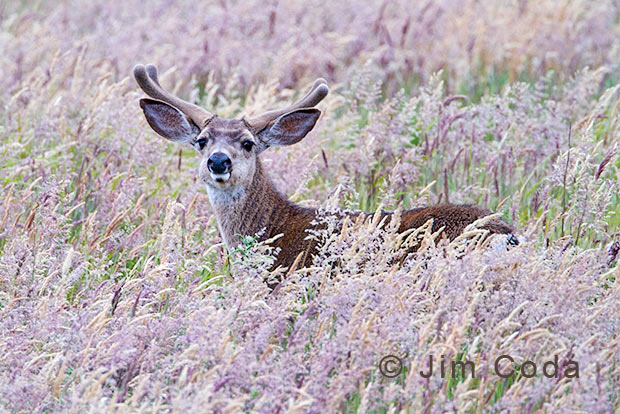Blacktail Deer Clears Fence at Point Reyes National Seashore

Blacktail deer clears a fence at Point Reyes.
The most common way barbed-wire fences kill deer and elk is when they get their hind legs caught between the top two wires. If you were to picture how they might jump, you might think of how a human performs a swan dive with back legs pointed to the rear. But no, deer need to have their hind legs pointed forward immediately after beginning the jump so their hind legs hit the ground right after the front legs. The photo above illustrates this.
If the top wire isn’t cleared and there isn’t at least 12 inches between the top wires, then their hooves go under the second wire and the result is that the top wire and the second wire reverse positions as the deer gets caught and falls. That reversal is called “scissoring.” A good way to demonstrate this is to take a rubber band and stretch it between your thumb and index finger. Now take a pen or pencil and insert it between the top and lower band and rotate it 270 degrees.
The deer’s weight causes it to hang from the top two wires and it is impossible for the deer to free itself. If the wires are far enough apart scissoring won’t happen, although the deer may still get injured in falling, especially if a barb is in contact with one or both legs.
If you want to see an example of scissoring, click here.
This Point Reyes elk somehow got barbed wire tangled in his antlers. NPS informed me many weeks later that the wire somehow fell off. I hope so.

A bull tule elk has caught some barbed wire in his antlers. This can lead to injury or death.
This Point Reyes bull elk wasn’t so lucky.

Bull Elk Killed by Barbed Wire
The wire wrapped across the bridge of its nose and its lower jaw. Its mouth was wired shut and it died slowly from lack of food or water or both. Note how the wire worked its way half way through its lower jaw.
Fencing is dangerous for wildlife and doesn’t belong in a national park. Cattle and the business of ranching on national park lands don’t belong in a national park either.





